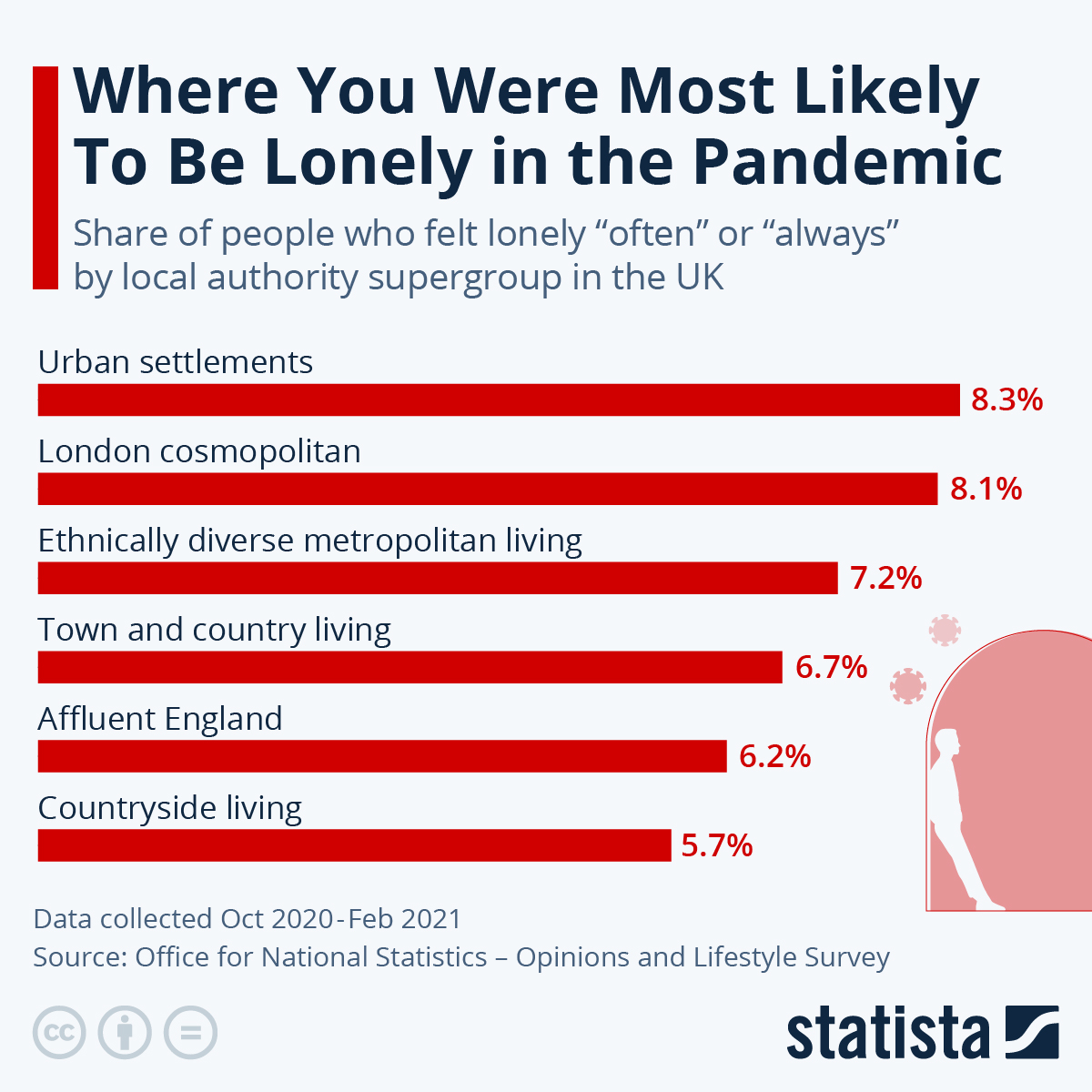New research on loneliness in the UK has found that up to one million more people are chronically lonely now than before the coronavirus pandemic, according to analysis from Campaign to End Loneliness and the Office of National Statistics (ONS). This brings the total number of people who say they “often” or “always” feel lonely from 2.6 million people in 2020 to 3.3 million people as of February 2022.
Rates of loneliness vary depending on the type of community. As our chart using data from the ONS shows, people living in urban areas were much more likely to be lonely than those living in the countryside, with urban settlements around Britain seeing 8.3 percent of people experiencing chronic loneliness versus only 5.7 percent of people living in the countryside. This difference likely comes down to the fact that people living in urban areas are more likely to have at least one of the “big five” associative factors. These include having a low income, being single and living alone, having a long-term disability and having recently experienced prejudice.
Research has found that age is also a factor, as young people aged 16-24 year olds were the loneliest group through the pandemic. This could be another reason that London has such a high rate of severe loneliness (8.1 percent), as the average median age of Londoners is 35.3, compared to 40.1 across the rest of the UK.
Robin Hewings, Programme Director of the Campaign to End Loneliness explains: “Covid-19 continues to have a massive impact on the very lonely – there are still more chronically lonely people now than there were before the pandemic. As restrictions have lifted, many lonely people haven’t been able to heal and rebuild their networks even though there are more opportunities to connect with their friends and families. We think that’s because being chronically lonely makes it harder to reach out.”
Chronic loneliness is damaging to both physical and mental health and particularly impacts the vulnerable, as it can contribute to a downward spiral by making other problems more difficult to deal with. By knowing which people are most at risk, governing bodies and organizations can be better target approaches towards helping people.





















